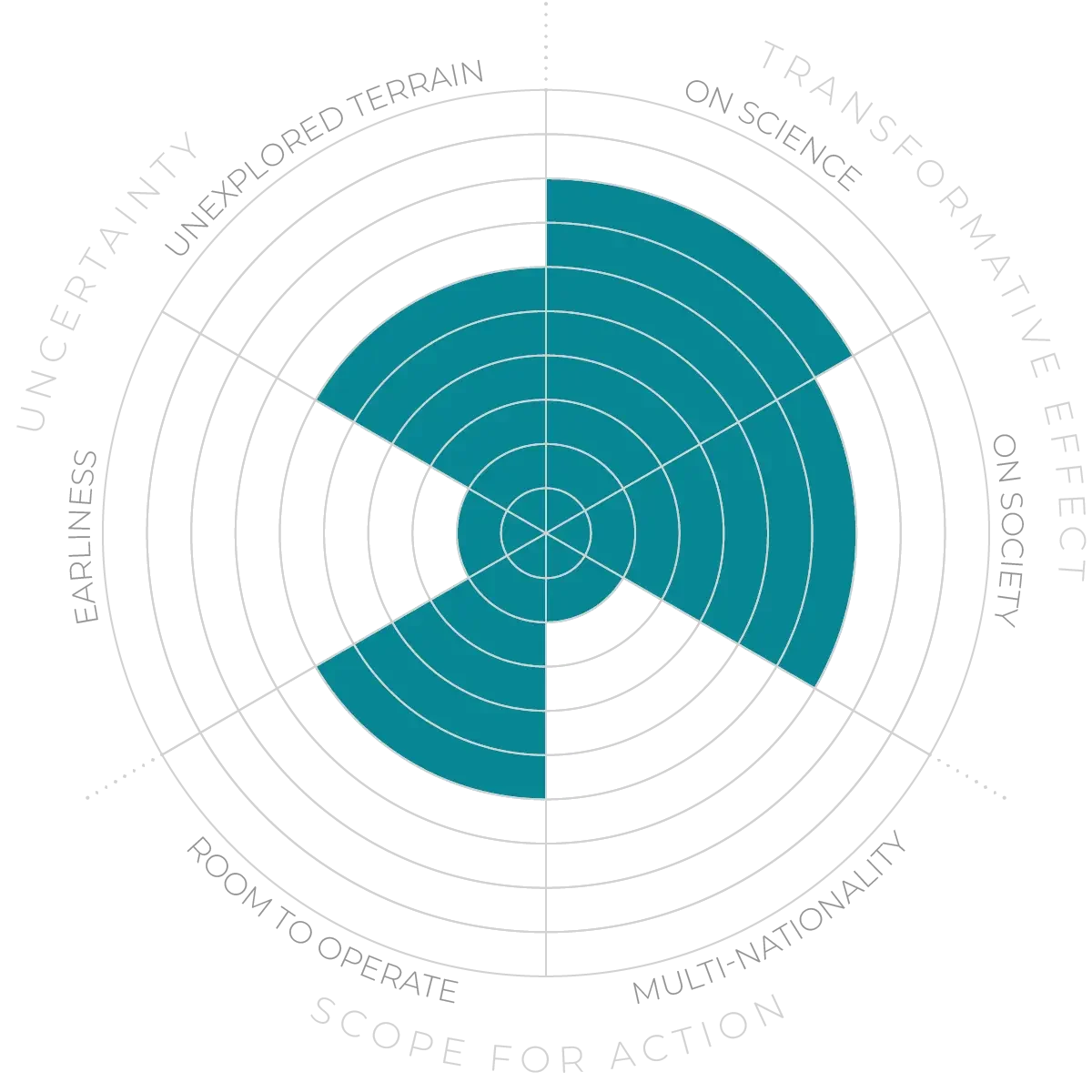5-yearhorizon
Organoids move beyond the basic
Organoids are created with blood supplies and lymphatic systems. Microfluidic devices enable multiple organoids to be connected and their interactions studied.
Organoids are created with blood supplies and lymphatic systems. Microfluidic devices enable multiple organoids to be connected and their interactions studied.
Organoids are grafted into existing organs to repair damage. More in-vivo data enables organoids to be validated against real organs.
AI-based systems optimise the maturation of organoids into organs. Organoid-based organ transplants are performed in humans.
Organoids have been developed for many body systems, including the intestines,32 kidneys,33 bone marrow,34 cartilage35 and neurons.36 It has also proved possible to create “gastruloids” that mimic some of the earliest stages of embryonic development.37 Furthermore, organoids can be used to simulate the growth of tumours, shedding light on the internal mechanisms of cancers.38
To create more realistic organoids, it will be necessary to add in more cells and complex tissues. For example, living organs have a blood supply, which affects their development and function.39 Researchers are now developing ways to create vascularised organoids,40 but the next generation may also need a lymphatic system and other additions.
Ultimately, organoids could be used to create replacement tissues and organs, serving as an alternative to organ donation. However, at present the culturing of organoids is inefficient, and it is difficult to upscale them to model more complex tissues. For clinical purposes, it will be necessary to validate organoids against “real” tissues or organs, and this is challenging because the necessary in-vitro data is frequently unavailable. One useful benchmark is the Human Cell Atlas41: however, for testing organoids it would be necessary to create an atlas showing how cells and tissues change during development.
As a result, organoids are not ready to be widely used clinically.42 Improvements may emerge from integrating organoids with the related field of organ-on-a-chip,43 and from the use of AI to optimise the construction.44
The Anticipation Potential of a research field is determined by the capacity for impactful action in the present, considering possible future transformative breakthroughs in a field over a 25-year outlook. A field with a high Anticipation Potential, therefore, combines the potential range of future transformative possibilities engendered by a research area with a wide field of opportunities for action in the present. We asked researchers in the field to anticipate:
This chart represents a summary of their responses to each of these elements, which when combined, provide the Anticipation Potential for the topic. See methodology for more information.

